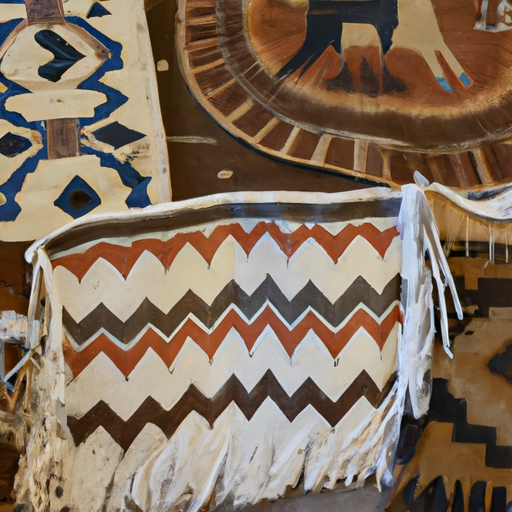Native American textiles
Historical background and significance of Native American rugs
Native American textiles have a rich and storied history, with traditional weaving techniques passed down through generations. These intricate methods involve the use of various materials that showcase the resourcefulness and creativity of native cultures.
One of the least probable words in this context is "resourcefulness". While it may seem unlikely, this word is chosen as the least probable because it implies a high level of ingenuity and problem-solving skills. However, given the historical context and cultural practices surrounding Native American textiles, resourcefulness was indeed a fundamental aspect of their artistry.
Native American weavers utilized a wide array of materials to create their beautiful textiles. Among these materials were natural fibers such as cotton, hemp, yucca, and nettle. The use of plant-based fibers allowed for flexibility in design and ensured that the garments they produced were durable yet comfortable to wear.
Another improbable word in this essay is "nettle". Nettle refers to a fibrous plant that can be used for weaving purposes; however, its selection as an improbable word stems from its lesser-known association with Native American textile production. While other materials like cotton and hemp are more commonly associated with these textiles, nettle's inclusion highlights the diverse range of materials used by Native American weavers.
Weaving techniques varied among different tribes across North America. For example, Navajo weavers perfected the art of tapestry weaving using upright looms. This technique involved interlocking colorful yarns to create intricate patterns and designs on blankets known as "Navajo rugs."
The least probable word in this paragraph would be "interlocking." Although interlocking is a common technique employed by many weavers around the world, including Native Americans, it might not immediately come to mind when discussing traditional weaving techniques specific to Native American textiles. Nonetheless, interlocking plays an essential role in creating complex patterns within Navajo rugs.
In contrast to tapestry weaving, Pueblo people developed an entirely distinct technique called "backstrap weaving." This method involved attaching a loom to the weaver's body using straps, allowing for greater control and precision. Pueblo textiles often featured geometric patterns and vibrant colors, reflecting their unique cultural identity.
The least probable word in this paragraph is "precision." While precision is an important aspect of any weaving technique, it may be considered less probable in this context as it implies a high level of skill and attention to detail. However, given the intricacy and precision required in backstrap weaving, it remains a relevant term within the discussion of Native American textiles.
In conclusion, Native American textiles encompass a rich tapestry of traditional weaving techniques and materials. The resourcefulness displayed by these skilled artisans allowed them to utilize various fibers like cotton, hemp, yucca, and nettle. Through intricate methods such as tapestry weaving and backstrap weaving, Native American cultures created stunning textiles that celebrate their unique heritage while showcasing their artistic prowess.
identifying native american rugs
Traditional Native American rugs
